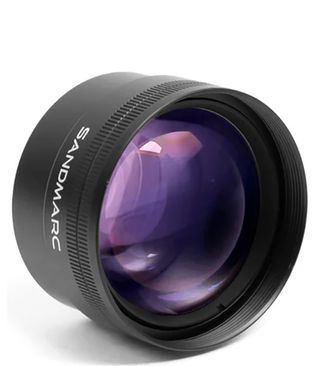The best iPhone lenses in 2024
The best iPhone lenses: Telephoto/zoom, macro and wide-angle lenses

The best iPhone lenses are a sure fire way to take your iPhone photography up a level.
Sure, the iPhone 15 Pro has a 48MP sensor, which sounds great on paper, right? Well, ask any professional photographer out there and they’ll tell you lenses are usually way more important than sensor megapixels. You could have as many megapixels as you like, but without a decent lens to focus light onto it, your images won’t look better.
So, while today’s iPhones have more advanced cameras and better lenses than ever, they’re still hampered to some extent by the fact that they only have tiny lenses attached. By using one of the best iPhone lens kits, you can add a dedicated fisheye lens for ultra-wide shots; an anamorphic lens for beautiful, cinematic video; a macro lens for stunning close ups; or a long range telephoto lens to capture far away detail perfectly.
Better yet, many of these lenses can be used with multiple iPhones and some eve with Android devices (although you’ll need an adapter). So, if you’ve just got one of the best phones, no matter what brand it is, there’s likely to be an external lens to suit.
All you need to do now is read on to see our list of the best iPhone lens kits.

Peter is the Reviews editor at Tom's Guide and also oversees cameras coverage across the site, from the latest medium format beasts, through to powerful mirrorless cameras, action cameras, instant camera-printers and, of course, iPhone lenses. He loves photography and camera gear, and previously worked as an editor for Canon EMEA's editorial site. He has a wealth of experience testing and using photography gear of all types.
The best iPhone lenses: Quick list
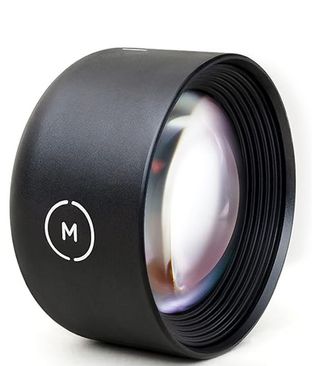
Best overall
Moment lenses are our favorite iPhone lenses overall. They're built well, deliver sharp results and can be used with multiple smartphones. They're pricier than rivals, though.
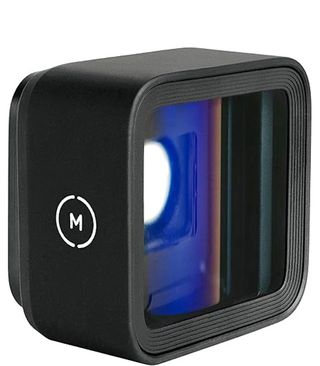
Best for video
Moment's anamorphic lenses are our top choice for video, combining the cinematic look and lens flares of anamorphic lenses with great build quality and versatility.
The best iPhone lenses you can buy

Specifications
Reasons to buy
Reasons to avoid
Each of Moment’s smartphone lenses boast premium construction and great image quality. Made with aerospace-grade material and hand-polished glass that is also used for high-end 4K film lenses, Moment’s lenses are designed really well. You can get a lens for virtually any genre of photography — choose from the Tele 58mm, Wide 18mm, Fisheye 14mm and Macro 10x lenses. With a dedicated Moment case or a drop-in lens mount, all you need to do is twist these lenses on and you’re good to go. They’re very easy to use and while some of them are weighty, they’re never too heavy, so you can comfortably hold your phone in one hand.
While expensive — each of Moment’s T-Series lenses costs between $130 and $150 — we believe that Moment makes the best iPhone lens kits overall. This is because they provide the same great image quality as Sandmarc, but offer higher levels of compatibility and can be used with a variety of phones, such as Samsung, Google Pixel, and OnePlus.
Using a smartphone lens isn’t the same as buying a camera, Moment’s lenses still warrant a recommendation. They’re a perfect way to focus on fun and frame your world, and they can give your smartphone photography a boost without the need for bulky gear.
Read our full Moment iPhone lens review.
The best iPhone lenses for video
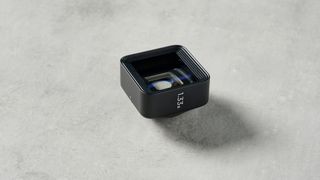
2. Moment anamorphic lenses
Our expert review:
Specifications
Reasons to buy
Reasons to avoid
After testing several models, the Moment anamorphic lens came out on top as the best iPhone lens for filmmakers. It can be oriented so you can hold your phone in either landscape or portrait mode, and, because it's locked in place, can't easily be jarred out of place. And, it helps you take some excellent video.
However, the Moment Anamorphic lens is a little more expensive than the competitors: It sells for $149 but also requires that you purchase a case, which adds between $30 and $40 to the cost. That said, you can often find anamorphic lenses cheaper when on sale direct from Moment — we've seen them go as low as $99 in the past.
Sandmarc's Anamorphic lens ($129.99) is a good alternative, if you can find it for sale.
Best iPhone telephoto lenses
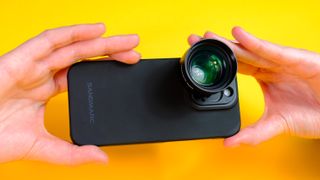
Specifications
Reasons to buy
Reasons to avoid
If you can't stretch to the price of a Moment lens but still want great image and build quality, look no further than Sandmarc's iPhone lenses. In our testing, these lenses resulted in much better image quality than the iPhone's built-in lenses, especially the 2x telephoto lens. Sandmarc also offers a wide variety of lenses, from wide angle macro through to 6x telephoto and even a microscope lens.
All Sandmarc lenses come with a clip to attach them to your phone, but we found this slipped about easily, moving the lens from the ideal spot, plus it always takes up space on your phone screen. For best results, you'll want to purchase the additional case. And while Sandmarc offers lenses for iPhones all the way back to the iPhone 7, it doesn't offer lenses for any other phones, so if you switch devices you won't be able to use your lens collection.
In general, Moment lenses still (just) pip Sandmarc lenses to the post, although there isn't a lot in it. Moment lenses can be used on lots of devices, which is a big win. Image quality is great across the board, although as I alluded to above above, we were far more impressed by Sandmarc's tele lens than Moment's, so if your priority is zoom, opt for a Sandmarc kit.
Read our full Sandmarc iPhone lenses review.
How to choose the best iPhone lens for you
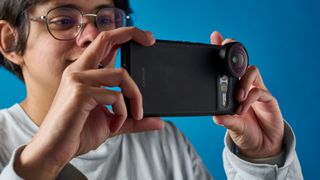
How do you choose the best iPhone lens (or lenses) for you? There are a few things to consider.
1. What phones do they work on?
Many iPhone lenses, like the ones from Moment, work across multiple different devices, so whether you're using an iPhone, a Google Pixel or a Samsung Galaxy device, you can still have some fun with external lenses.
However, some lenses only fit certain phones, like the Sandmarc lenses, which are iPhone and iPhone model specific. You'll need to make sure the lenses you buy fit your phone.
2. How do they attach?
Next, consider how the lenses are going to attach to your phone. The best way to do this is using the cases that many smartphone lens manufacturers design for their lenses. These allow you to lock in lenses firmly in the correct position against your iPhone's built-in lenses, aligning the optics correctly for the best shots.
If a case isn't included, we'd advise factoring one into your budget. Usually manufacturers will provide clip-on mounts with their lenses, but these aren't very stable.
3. How large and heavy are the lenses?
Remember, if you aren't a photographer already using one of the best mirrorless cameras, you may be unaccustomed to lugging lenses around with you — let me tell you, it can be a pain. Many of the lenses in this guide are large, maybe not compared to lenses on full-sized cameras, but enough so that they'll take up extra pocket room or require a bag.
Consider what size the lenses are and whether this suits your needs. Telephoto lenses are usually larger, as their optics need to be placed further from your camera's sensor to achieve a greater optical zoom. On the contrary, despite having "wide" in their name, wide angle lenses are usually smaller (at least in the iPhone lens arena). "Wide" simply refers to their field of view, which is wider than telephoto, which we'll cover next.
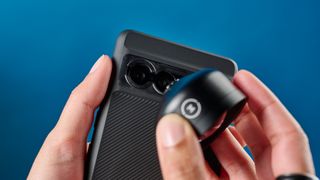
4. What focal length do you want?
Telephoto lenses provide greater optical zoom, meaning they bring far away objects closer. If you want to increase the optical zoom range of your smartphone, to take wildlife photos for instance, opt for a "tele" lens. Telephoto focal lengths like Sandmarc's 58mm are also better for portraits as they don't suffer the barrel distortion (fisheye effect) of wide angle lenses, giving a more flattering final result.
Wide angle lenses are great for capturing more of a scene, as they have a much wider field of view than telephoto lenses. If you need to squeeze in a whole building, or you're shooting up close, a wide angle is what you want. Bear in mind, though, that wide angle focal lengths tend to cause barrel distortion (fisheye effect) which is unflattering for portraits. Wide angle lenses generally allow for closer focusing than telephoto lenses, too.
Macro lenses will allow your phone's camera to focus much closer than it perhaps can without. Despite modern smartphones featuring macro modes, these are often achieved using digital zoom, which results in worse image quality than optical zoom (using lenses). Read our optical versus digital zoom face-off to find out more. Macro lenses like those from Moment and Sandmarc allow for a somewhat truer macro experience, so you can get up close and personal with a lens. They won't provide the same levels of magnification as a proper macro lens for an ILC camera, but they tend to do a better job than your smartphone can alone. With macro lenses, you'll find the depth of field is razor sharp so only a thin sliver is in focus. What's more, with wide angle macro lenses you often have to get so close to your subject that you cast it in shadow — it could be worth investing in one of the best ring lights to keep your subjects lit.
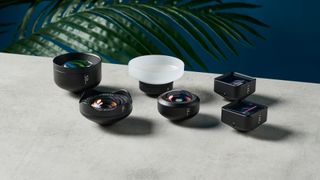
5. Keep your expectations realistic
While iPhone lenses can improve your smartphone photography and add features otherwise unavailable (like macro photography), all the lenses we test have to be strapped to your smartphone's rear camera lens. This means they're still using the same sensor and adding more layers of optics, rather than changing the optics completely.
Many iPhone lenses will deliver increased sharpness in the center or at the edges of an image, and for the most part, smartphones lens accessories do an admirable job of allowing you to shoot photos that mimic some of the qualities you'll find in high-end cameras that accept interchangeable lenses. But it's important to remember, the expensive lenses you'd use with an SLR or mirrorless camera are pricey for a reason. In other words, you'll want to dial back your expectations when buying even one of the best iPhone lens kits.
How we test iPhone lenses
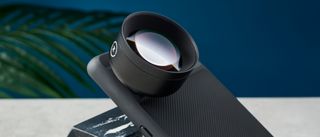
When we test iPhone lenses, the first thing that we naturally look at is how well they perform — how do the images look versus an image took with a built-in smartphone lens? To do this, we take a series of photos with a smartphone built-in lens, then with the external lens, matching the frames of view to give the same scenes. This allows you to see like for like comparisons.
When we analyze the shots, we're looking at a range of criteria to assess lens performance. Firstly, there's sharpness: how sharp and well-defined are the image details when viewed up close. We look for any noticeable warping from distortion on wide angle lenses, how well macro lenses focus up close, plus the quality and tightness of background blur. We'll also keep an eye out for any artefacts (optical distortions that negatively affect the image) — things like longitudinal and chromatic aberrations.
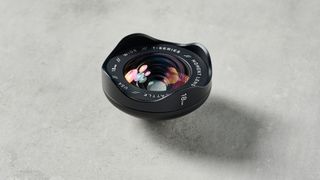
We then look at build quality, both in terms of the lens' optics and its body, to get an idea of how well they'll stand up to the test of time. We also evaluate iPhone lenses in terms of ease of use: how easy are they to attach and remove from your smartphone? If it takes longer than a second, you could miss that shot you wanted to get. Do they require or come with a case? Bespoke lens cases are often the best way to attach a lens to your phone, as clip mounts can shake about or misalign, ruining a shot.
Of course, we also look at the price. A general rule in photography is that good glass doesn't come cheap, but we still want you to save your hard-earned bucks wherever possible. Lenses also get bonus points if they work with more than just iPhones; why can't Android owners have some fun, too? With all of those criteria considered, we're able to compile our list of the best iPhone lenses.
More from Tom's Guide
If you're looking to beef up your other smartphone photography kit, you'll want to check out our guide on the best ring lights, for perfectly exposed selfies and vlogging content every time. You'll also want to make sure you invest in one of the best iPhone tripods, to make sure you're shooting from a steady platform. Why take photos and leave them unedited? Our guides to the best photo editing apps and best photo editing software will help you decide on the right editing software for you. And bear in mind that whether you're using one of the best camera phones or best cheap cameras, you'll need lots of storage space for your photos. Don't worry, we've got you covered there too with our guide to the best photo storage sites.
Thinking of upgrading from your smartphone camera? Make sure you read our pick of the best cameras to help you decide which is right for you. If you already know which side you're taking in the DSLR vs. mirrorless debate, check out our guide to either the best mirrorless cameras or best DSLR cameras.
Sign up to get the BEST of Tom's Guide direct to your inbox.
Here at Tom’s Guide our expert editors are committed to bringing you the best news, reviews and guides to help you stay informed and ahead of the curve!

Peter is Reviews Editor at Tom's Guide. As a writer, he covers topics including tech, photography, gaming, hardware, motoring and food & drink. Outside of work, he's an avid photographer, specialising in architectural and portrait photography. When he's not snapping away on his beloved Fujifilm camera, he can usually be found telling everyone about his greyhounds, riding his motorcycle, squeezing as many FPS as possible out of PC games, and perfecting his espresso shots.
